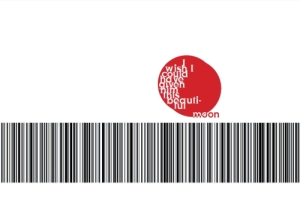Around the time Michael Leong and I first met at Sarah Lawrence College, I was beginning my study of zen buddhism and the various poetic traditions that have accompanied this particular religious practice. I became especially engaged with the koan tradition and its inherent accretions of commentary and response. In many ways, I suspect this process intentionally mirrors the gradual growth of language itself from the representational to the metaphorical (and back to representational)…the way, within and between each generation, meanings shift and open language to re-interpretation.
Part riddle, part poem, part teaching, part text, each koan is an accumulation of layers resulting from the edits and additions made by subsequent zen masters over the centuries. With BAR/koans, I was attempting to both continue that tradition of poetic accretion and simultaneously strip away the layers to expose the core moment of human realization at the center of each passage.
I did so with a curious eye toward the digital signatures we are all so busy creating in our daily lives. What will they mean to future generations? How will civilizations-to-come encounter the fragments we leave behind minus the context that the passage of time inevitably erodes? The human mind is capable of great leaps of faith and logic. There is perhaps no better example of this capacity than the koan. But without the context of the zen tradition to frame its hidden meanings, what is left? More importantly, WHO is left to reconstruct that context?
The answer is, to me at least, obvious: Robots.
Or, at the very least, the cybernetic simulacra of humanity we seem so obsessed with evolving into. So BAR/koans started as an attempt to translate the core phrases and realizations of each koan into a language better suited to the electronic contexts and constructs I suspect will replace what we call human consciousness in the relatively near future. What better vessel than that ubiquitous symbol of mechanized capitalism, the bar code?
Using an online bar code generator, I translated the core phrases from each koan and rearranged them into a new narrative of sorts. I published a small portion of the original manuscript in a simple black and white format with bar codes over text. Then, when Erg Arts agreed to publish the collection as a whole, I worked closely with the amazing graphic designer John Moore Williams to create a more varied and visually pleasing (to the human eye, at least) form. Truth be told, Mr. Williams deserves the greatest share of the credit there. I had originally envisioned a more illustrative style that incorporated each bar code into a larger drawing but, in the end, I think his minimalist typographic treatment and arrangement was the perfect vessel for this series.
The final product is, in my opinion, a fitting representation that successfully balances the information gathering needs of both humans and machines.
